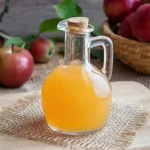If you’ve ever bought a bottle of water then you’ve probably found yourself wondering which is better between spring and purified water? Considering the potentially low quality of tap water it’s a valid question, especially if you’re concerned about what you’re putting into your body.
The bottom line is that you really are what you eat, and drink between Spring and Purified water!
Understanding Spring Water
In this case, the clue is in the title. Spring water comes directly from the ground, in the form of a natural spring.
Water evaporates to form clouds, these move with the wind, rising and falling according to temperatures. When they are ready they release the moisture which comes back to earth as rain. This then flows through rocks and soil to fill rivers, reservoirs, and even the sea. At this point, the water cycle starts all over again.
Some of this water goes deep underground; this is the water you can tap into if you drill a borehole deep enough. Of course, you have to find it first!
This water will naturally find its way back to the surface of the planet. At the point it comes out of the ground it’s referred to as a spring. This is the water used for spring water.
However, most companies will not collect the water at the spring. Instead, they will trace it back and collect the water at its source, ensuring it is as pure as possible.
This water will then be passed through large filters to ensure all debris is removed, before being bottled and sold to you.
What Is Purified Water?
Purified water is defined as any water that has been refined in one of three ways:
1. De-ionized
Water that has been de-ionized is water where the ions have been removed. These are non-organic particles, such as sodium, calcium, iron, and copper. It also removes chlorides and sulfates.
The water is pushed through a special chamber where water rich in hydrogen ions is already present. The hydrogen ions switch places with the non-organic particles, effectively removing them from the water.
It’s worth noting that the purer the water is going into a de-ionization process, the better the out coming quality. It’s worth putting the water through reverse osmosis first.
This process provides water that is similar in quality to distilled water, but it is faster. There are actually different forms of de-ionization but the end result remains the same whether you use co-current or counter-current de-ionization.
2. Distilled
This is often referred to as the best way to get pure water, potentially the purest water of all. The water is boiled, this converts it to steam. The steam is then captured and cooled, allowing it to become water again!
As water boils at a lower temperature than most contaminants, the steam that is collected is free of minerals, heavy metals, and other chemicals. It’s effectively pure. Providing the equipment used to capture the steam and cool it back to water is sterilized you’ll have pure water.
That makes distilled one of the best options although not the easiest to do at home. However, it is worth noting as it can be a life-saver if you have a few basic items and you’re in the wilderness without water.
Distillation is generally something done as part of an industrial process.
3. Reverse Osmosis
Reverse osmosis water filters Melbourne are one of the most common types of home filtration systems. In this instance, the water is forced through a semi-permeable barrier. This allows water through but prevents the minerals and other organic materials from passing.
It’s an effective way of removing contaminants in the water, including the chemicals that are added at the water treatment plant. The water that comes out after the reverse osmosis filter is generally considered to be pure and is certainly safe to drink.
Which Is Better between Spring and Purified water?
The bottom line is that spring water should be healthy because it has minerals in it which are essential for your body. However, too much of these minerals can be detrimental to your body. In addition, the water may contain heavy metals which can also be harmful to your body.
Spring water is verified as coming from a spring, which means it should be purer than the water from your faucet. But, there is no guarantee of this and it doesn’t need to be tested as regularly as tap water.
In contrast, you know what minerals and contaminants are being removed from your tap water when you purify it. This is the better option as you know what you’re putting into your body.
The fact that having a filter fitted at home is also more convenient is a bonus and one of the reasons why there has been a steady increase in the sale of water filters over recent years.









